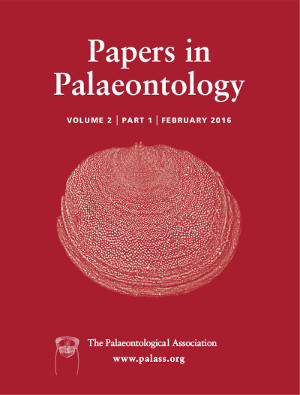Reg. Charity No. 1168330

The neotype skull of the Indian phytosaur Parasuchus hislopi Lydekker, 1885 (ISI R42) is re‐evaluated and compared with the type material of other basal phytosaurs. Parasuchus hislopi is extremely similar to species previously placed in Paleorhinus (P. bransoni and P. angustifrons), sharing with them such characters as a series of nodes on the lateral surface of the jugal, paired ridges on the squamosal and a frontal depression. Parasuchus hislopi represents a valid species: it can be distinguished from P. bransoni by a relatively low narial eminence and P. angustifrons by the absence of paired nasal depressions. Inclusion of Parasuchus hislopi in a phylogenetic analysis of phytosaurs recovers it in a well‐supported clade with P. bransoni and P. angustifrons. Parasuchus is considered the senior synonym of Paleorhinus and Arganarhinus. Parasuchus (here considered to include P. hislopi, P. angustifrons, P. bransoni and P. magnoculus) has a broad circum‐Pangaean distribution, with species occurring in the south‐western United States, Morocco, central Europe and India. Phytosaur higher‐level taxonomy is also revised: Parasuchidae is redefined to include ‘Paleorhinus‐grade’ phytosaurs and the later‐diverging Mystriosuchinae (the group formerly known as Phytosauridae), and Pseudopalatinae is renamed Mystriosuchini for reason of priority.